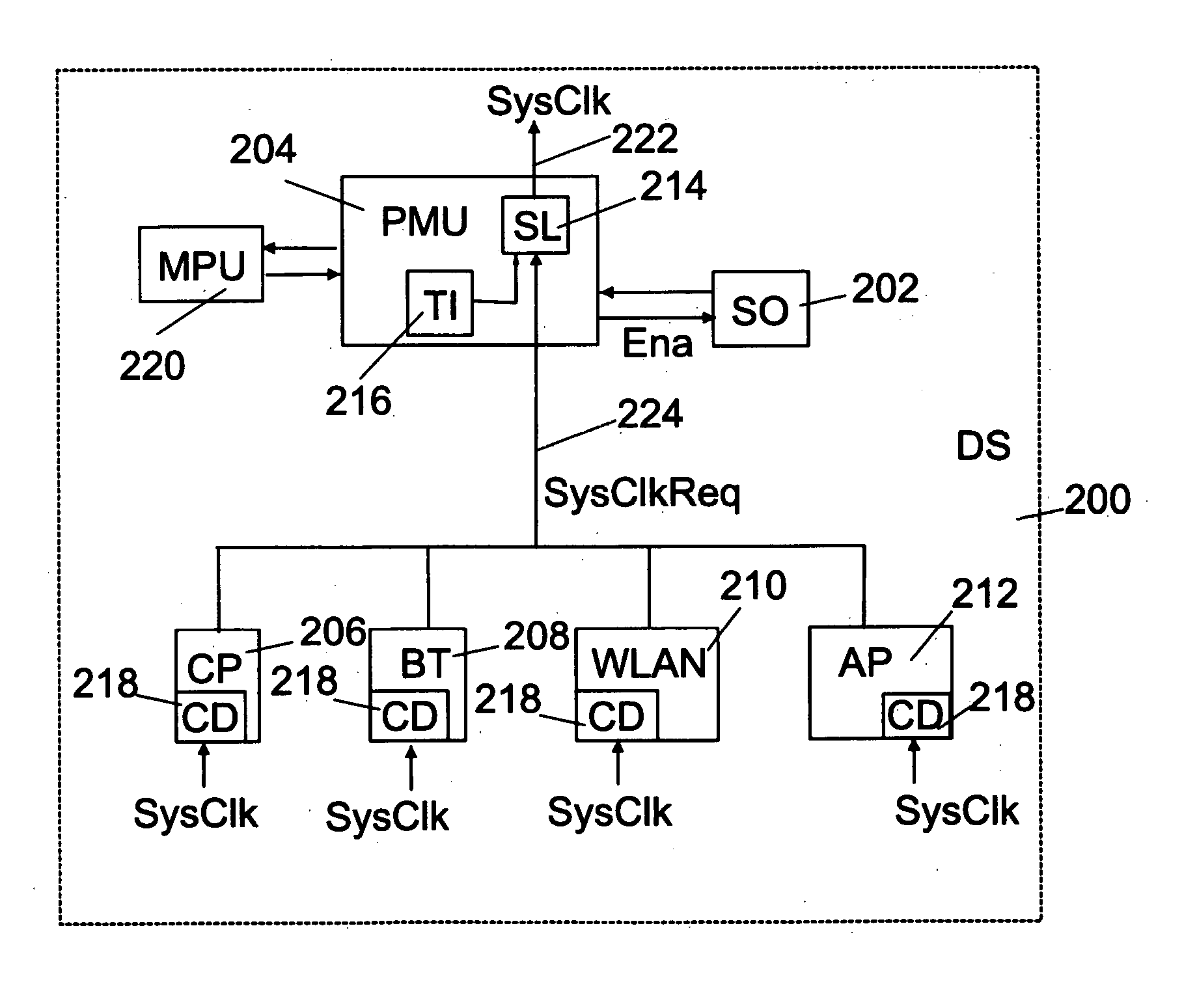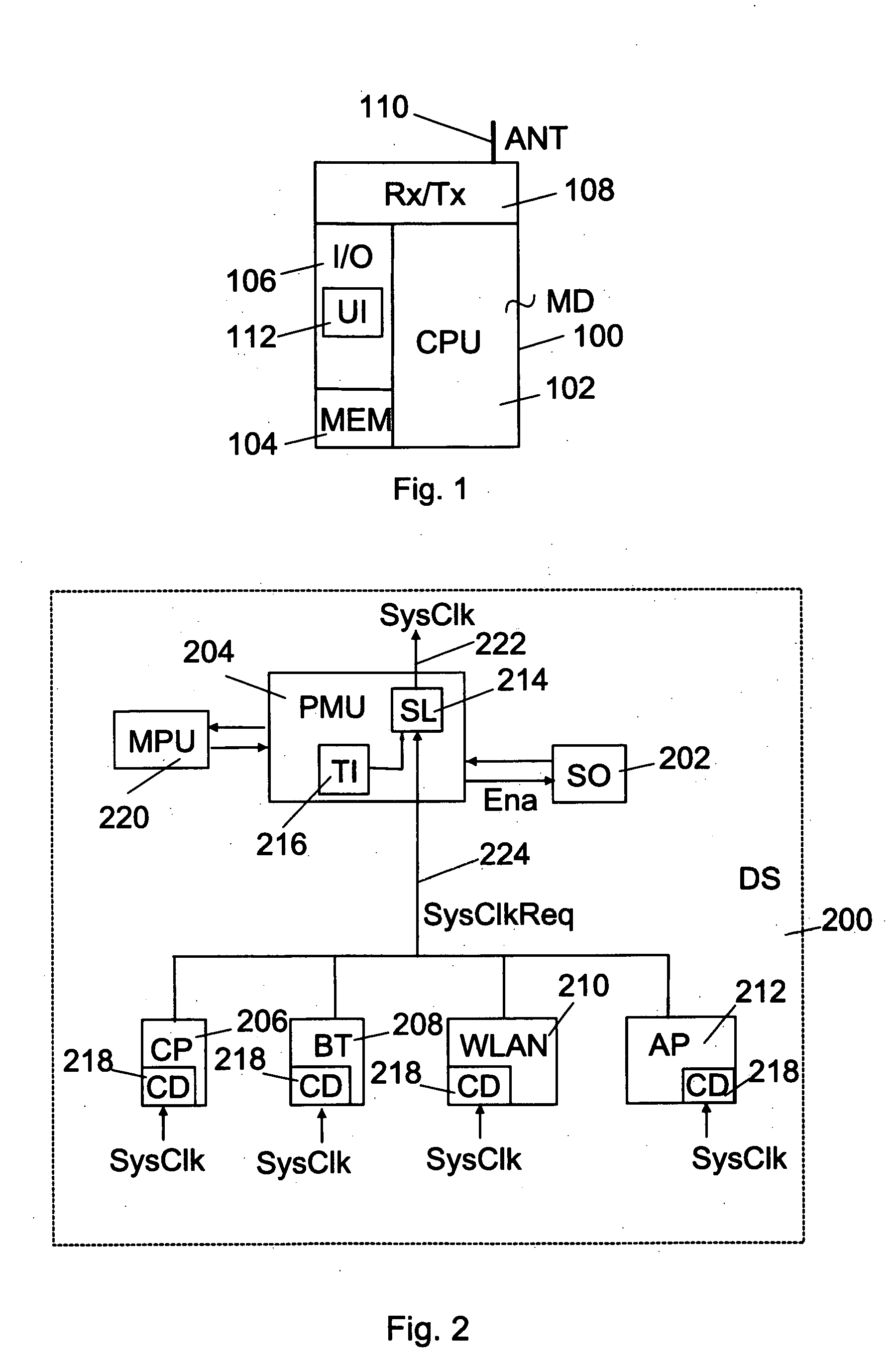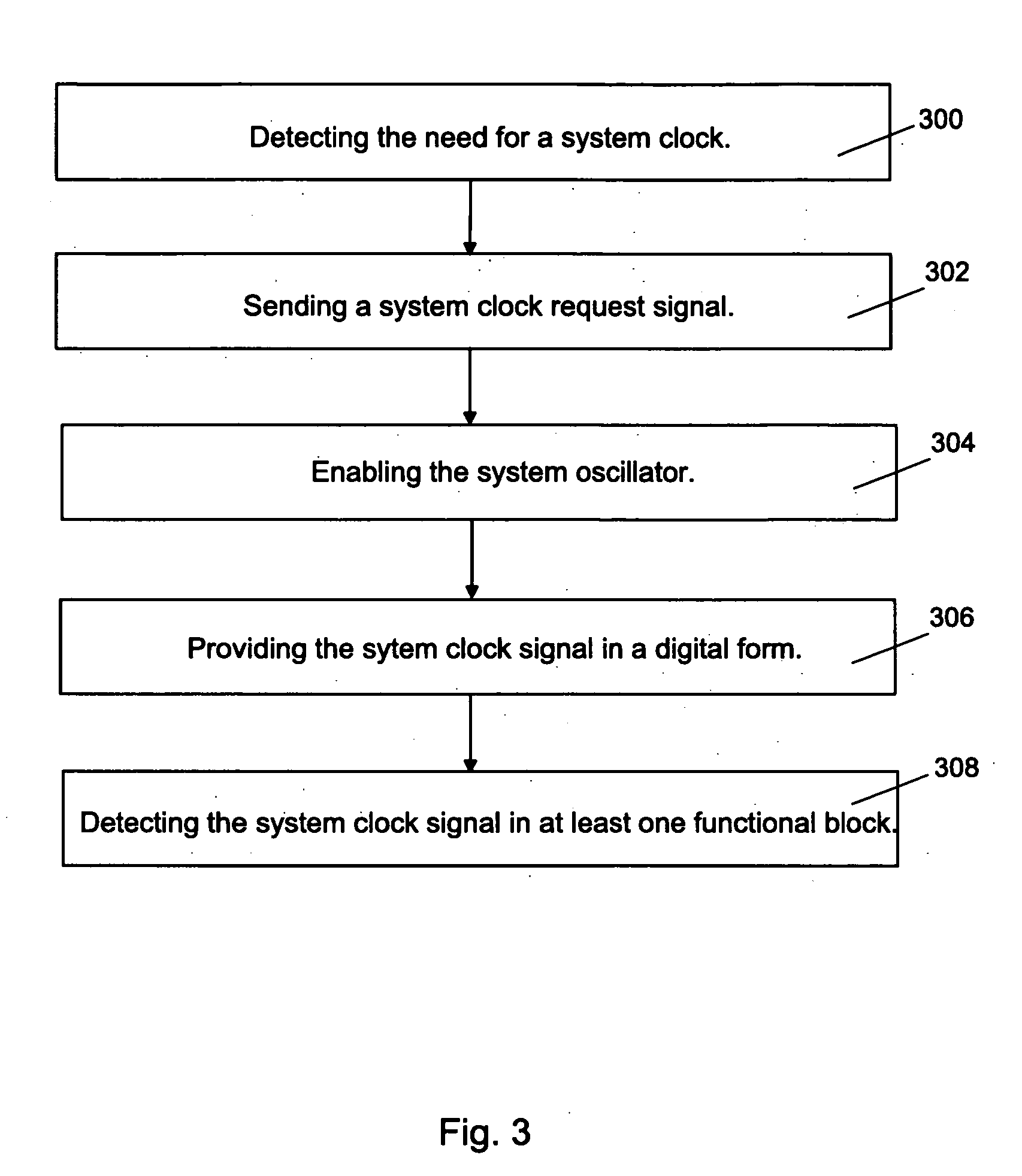Digital system clock control
a digital system and clock control technology, applied in the field of digital systems, can solve the problems of only wasting power, consuming more power, and consuming more power
- Summary
- Abstract
- Description
- Claims
- Application Information
AI Technical Summary
Benefits of technology
Problems solved by technology
Method used
Image
Examples
Embodiment Construction
[0019]FIG. 1 describes some basic features of a mobile device MD (100), such as a mobile phone, a laptop or a PDA device (Personal Digital Assistant device) in which the invention can be applied. Here the mobile device MD generally refers to a wireless terminal capable of processing data in digital form. The mobile device MD comprises a central processing unit CPU (102) comprising one or more processors, a memory MEM (104), an input / output system I / O (106) and a receiver-transmitter Rx / Tx (108), which is arranged to receive and transmit data according to various data transfer protocols via an antenna ANT (110). The requested data needed is stored in the memory MEM, which typically comprises read memory, such as ROM (Read Only Memory) for storing applications used for controlling the central processor unit CPU and other data to be stored, and write memory, such as RAM (Random Access Memory) and / or FLASH memory for processing temporary data. The mobile device MD communicates outwards,...
PUM
 Login to View More
Login to View More Abstract
Description
Claims
Application Information
 Login to View More
Login to View More - R&D
- Intellectual Property
- Life Sciences
- Materials
- Tech Scout
- Unparalleled Data Quality
- Higher Quality Content
- 60% Fewer Hallucinations
Browse by: Latest US Patents, China's latest patents, Technical Efficacy Thesaurus, Application Domain, Technology Topic, Popular Technical Reports.
© 2025 PatSnap. All rights reserved.Legal|Privacy policy|Modern Slavery Act Transparency Statement|Sitemap|About US| Contact US: help@patsnap.com



